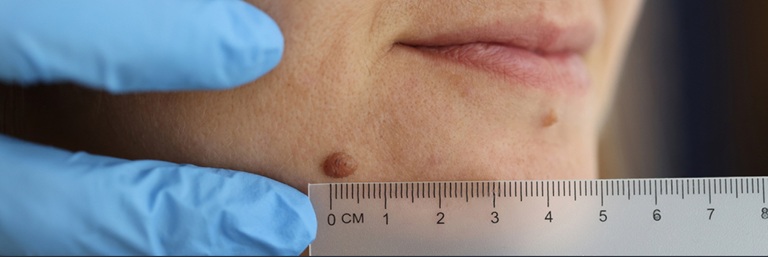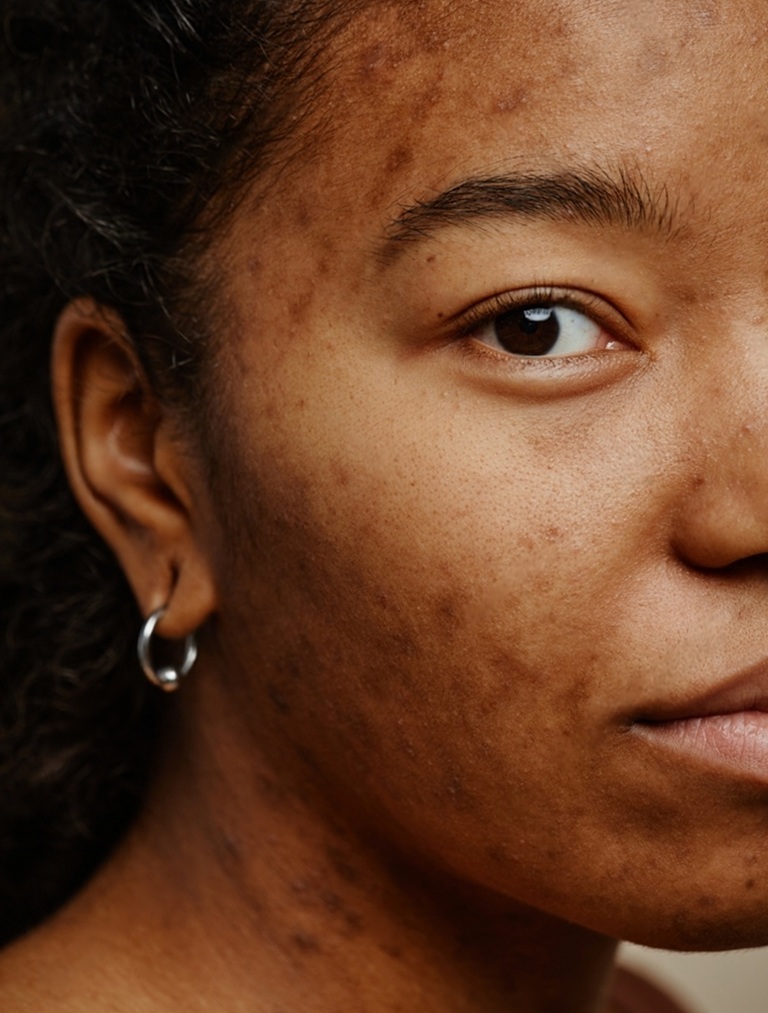

Best Moles and Skin Blemishes Treatment in Altrincham, UK

Professional Moles and Skin Blemishes Treatment in Altrincham
Most moles and skin blemishes are completely harmless, but they can affect your confidence and appearance. At Bollin Clinic in Altrincham, we provide comprehensive assessment and treatment for various types of moles and skin blemishes. Moles are small patches on the skin that form due to collections of cells called melanocytes, which produce the colour (pigment) in your skin. The scientific name for moles is melanocytic naevi.
What are Moles and Skin Blemishes?
A blemish is any type of spots, discoloration, mark or flaw on the skin. Skin blemishes can be removed with various forms of burning or freezing such as cautery, laser or liquid nitrogen. Your plastic surgeon will inform you as to the best way to remove your unattractive blemishes. Some blemishes, however, can signal skin cancer, which is why professional assessment is crucial.
Types of Moles and Skin Blemishes We Treat
At Bollin Clinic, we diagnose and treat various types of moles and skin blemishes with specialized expertise:
- Common moles (melanocytic naevi) - benign skin growths
- Atypical moles - irregular moles requiring monitoring
- Skin tags - small, soft growths that hang from the skin
- Seborrheic keratoses - raised, waxy growths
- Age spots and sun spots - pigmented lesions
- Warts - viral skin growths
- Cysts - fluid-filled bumps under the skin
- Cherry angiomas - red, raised spots
Signs of Moles and Skin Blemishes Requiring Treatment
While most moles and skin blemishes are harmless, certain characteristics may indicate the need for professional evaluation and treatment. It's important to monitor your skin regularly and seek medical attention if you notice any concerning changes.
- The mole has uneven shading or dark spots
- The spot is changing in size, shape or texture
- The mole has an irregular shape or asymmetrical appearance
- Fleshy bumps, warts, or other unusual skin growths
- Raised bumps that are red, white, or multicolored
- Bleeding, itching, or crusting of existing moles
- Moles larger than 6mm in diameter
- New moles appearing after age 30
What Causes Skin Blemishes and Moles?
Understanding the causes of moles and skin blemishes helps with prevention and treatment planning:
- Virus - Some blemishes, like warts and cold sores, are caused by viruses such as HPV and HSV-1
- Infections - Certain types of bacterial or fungal skin infections can cause blemishes to erupt
- Genetics - Many moles and certain hereditary conditions causing blemishes have a genetic component
- Sun exposure - Overexposure to UV rays can cause hyperpigmentation, age spots, and other skin damage
- Hormonal changes - Can trigger oil overproduction leading to various skin blemishes
- Aging - Natural aging process can lead to various skin growths and changes
- Friction - Repeated rubbing can cause skin tags and other growths
Benefits of Professional Moles and Skin Blemishes Treatment
- Accurate diagnosis to rule out malignancy
- Safe, professional removal with minimal scarring
- Improved appearance and enhanced confidence
- Prevention of irritation from clothing or shaving
- Histological examination when necessary
- Expert assessment of concerning changes
- Personalized treatment approach for optimal results
- Follow-up care and monitoring
What is the Process for Moles and Skin Blemishes Treatment in Altrincham?
At Bollin Clinic, we provide comprehensive assessment and treatment for moles and skin blemishes using advanced techniques tailored to each patient's specific needs and the type of lesion being treated.
Consultation & Assessment
Your treatment journey begins with a thorough consultation where our specialist will examine your skin condition and discuss your concerns. We use advanced diagnostic tools to assess the nature of your moles or blemishes and determine the most appropriate treatment approach.
- Comprehensive skin examination and medical history
- Dermoscopy for detailed lesion analysis
- Photography for documentation and monitoring
- Assessment of risk factors and family history
- Discussion of treatment options and expectations
Treatment Options
Moles and skin blemishes treatment in Altrincham is customized based on the type, size, location, and characteristics of the lesion. Our treatment options include:
- Surgical excision for suspicious or large moles
- Shave excision for raised lesions
- Laser treatment for pigmented lesions and age spots
- Cryotherapy (liquid nitrogen) for warts and seborrheic keratoses
- Cautery for small skin tags and benign growths
- Electrosurgery for various skin blemishes
- Punch biopsy for diagnostic purposes
Preparing For Your Treatment
Before your moles and skin blemishes treatment, avoid sun exposure to the treatment area and do not use any blood-thinning medications unless approved by your doctor. Understand the planned procedure, including risks, benefits, and alternative options. Discuss any concerns with your specialist before the treatment.
Post-Treatment Care
- It is recommended you leave the dressing on for 48-72 hours depending on the treatment site
- Gently cleanse the wound with fragrance-free soap or Cetaphil cleanser, avoid antibacterial soap
- Some patients may experience itchy bumps or blisters, usually due to antibiotic ointment allergy
- Use sunscreen, sun-protective clothing, and hats to protect from UV rays
- Monitor for signs of infection including redness, swelling, or unusual discharge
- Follow-up appointments for wound assessment and results discussion
- Avoid picking or scratching the treated area during healing
Our team provides comprehensive aftercare support and guidance to ensure optimal healing and results from your moles and skin blemishes treatment in Altrincham.

Are There Any Risks with Moles and Skin Blemishes Removal?
-
Common Risk
Scarring at the treatment site - varies with removal method and healing
-
Possible Risk
Infection of the surgical wound - usually treatable with antibiotics
-
Minor Risk
Bleeding from the treatment site - typically minimal and controlled
-
Rare Risk
Allergic reaction to anesthesia - extremely uncommon occurrence
-
Very Rare Risk
-
Important Note
Choose experienced practitioners to minimize risks and optimize outcomes

See our faqs
Moles and Skin Blemishes Treatment – Your Questions Answered
How can I diagnose skin problems and blemishes?
Doctors can diagnose many skin problems by discussing symptoms and examining the skin. Sometimes additional testing may be necessary, including bacterial, viral, or fungal skin infection tests. Professional evaluation is essential for accurate diagnosis and appropriate treatment planning.
What's the ideal method for maintaining balanced skin?
The ideal method for maintaining balanced skin is keeping a consistent skincare routine and avoiding harsh chemicals that can strip the skin and create more blemishes. Additionally, a diet rich in water, fresh fruits and vegetables and low in preservatives is also important for healthy skin.
How long do dark spots and blemishes take to fade?
Dark spots don't indicate long-term damage to skin cells, pores, or follicles. They tend to become lighter over time and eventually disappear completely. It can take anywhere from 3 months to 2 years for them to vanish, depending on the type and depth of pigmentation.
What causes acne scars and blemishes to form?
Acne scars result from inflamed blemishes caused by skin pores engorged with excess oil, dead skin cells and bacteria. The pore swells, causing a break in the follicle wall. Shallow lesions are usually minor and heal quickly, while deeper inflammation can cause scarring.
What causes overproduction of oil and blemishes?
Overproduction of oil by sebaceous glands can cause blemishes. Hormonal changes often trigger this overproduction, particularly during puberty. Excess oil can mingle with dead skin cells, dirt, or bacteria, resulting in pimples, pustules, blackheads, and whiteheads.
Does moisturizing cause more acne and blemishes?
No, moisturizing doesn't cause acne. In fact, it's a very important part of treating acne as it loosens sebum built up inside pores. However, you need to find a moisturizer suitable for acne-prone or oily skin to avoid clogging pores or aggravating existing acne.
When should I seek professional treatment for moles?
Seek professional evaluation if you notice changes in existing moles or new moles appearing. Signs requiring attention include asymmetry, irregular borders, color variations, diameter larger than 6mm, or evolution in size, shape, or texture. Professional assessment ensures accurate diagnosis and appropriate treatment.
